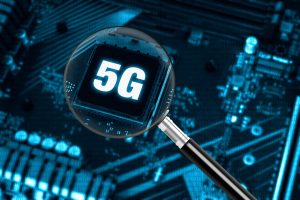The digital divide refers to the gap between individuals with access to modern information and communication technologies and those without. This disparity can lead to inequalities in education, healthcare, and economic opportunities. The advent of 5G technology, with its promise of faster speeds and lower latency, has been heralded as a potential solution to bridge this gap. However, the question remains: Can 5G help close the digital divide?
Exciting Opportunities 5G Offers to Bridge the Digital Divide
One of the fantastic benefits of 5G is its amazing capability to offer high-speed internet access, especially in areas where traditional broadband might not reach. Fixed Wireless Access (FWA) is a great example of this potential. As the World Economic Forum highlighted, “5G fixed wireless access (FWA) opens up wonderful opportunities for public-private partnerships focused on achieving global digital literacy goals and programs.” By rolling out FWA, service providers can bring essential broadband services to rural and underserved communities without the complex process of installing extensive cables.
Additionally, 5 G’s amazing capabilities, including its greater capacity and reduced latency, can truly boost applications vital for socio-economic growth. For example, telemedicine, online education, and remote work will become even easier and more effective with strong 5G connectivity. Qualcomm states that “5G technology can go beyond the limitations of current networks to provide high-speed, reliable internet access to underserved communities.”
Challenges in Leveraging 5G to Close the Digital Divide
While 5G holds great promise, there are a few important challenges we need to tackle to help it truly connect everyone and bridge the digital divide.
Infrastructure Deployment: Rolling out 5G infrastructure, especially in rural and remote areas, can be cost-prohibitive. The high-frequency bands used in 5G have shorter ranges, necessitating a higher density of base stations. This requirement poses logistical and financial challenges in less populated regions. A study published on arXiv discusses the feasibility and cost of using alternative spectrum options, such as TV White Spaces, to extend 5G coverage in rural areas.
Affordability: Even if 5G networks are available, the cost of 5G-enabled devices and data plans may be prohibitive for low-income populations. Initiatives like MTN South Africa’s launch of an affordable 5G smartphone aim to address this issue. Priced at 2,499 rand (approximately $138), the MTN Icon 5G smartphone seeks to make mobile internet more accessible and encourage the transition from older technologies to 4G and 5G.
Digital Literacy: Access to technology alone is insufficient; individuals must also possess the skills to utilize digital tools effectively. Public-private collaborations are essential in implementing digital literacy programs to ensure communities can fully benefit from 5G connectivity. The World Economic Forum emphasizes the importance of such collaborations in achieving global digital literacy goals.
Global Disparities in 5G Adoption
The rollout of 5G technology is quite varied worldwide, and this disparity could widen the global digital divide. According to a report by the Social Market Foundation, British users enjoy 5G access only 10% of the time, which is a far cry from places like India (40%) and South Korea (38%). Remarkably, the UK finds itself at the bottom of the list among 15 leading economies for 5G availability, emphasizing the urgent need for more investment and better infrastructure. The exciting aspect is that 5G has the potential to bridge the digital divide by offering high-speed internet to underserved communities. However, to truly unlock this potential, we must tackle several challenges head-on. This means making strategic investments in infrastructure, ensuring devices and services are affordable, and rolling out comprehensive digital literacy programs. By working together, all stakeholders can turn these challenges into opportunities, making 5G a key player in fostering a more connected and equitable global society.



